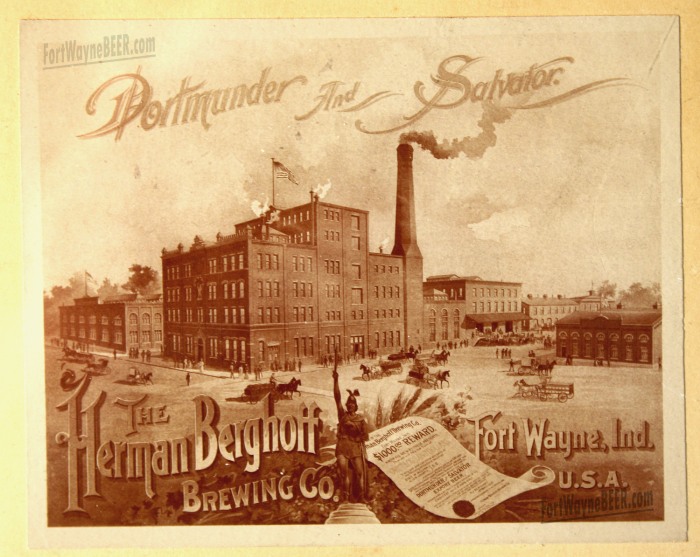Urban expansion offers many benefits that come with a cost. Since the rapid spread of the metropolis began in the 1950s we’ve had to move a few bodies around. The Tennessee Valley Authority (TVA) for example, which now powers over 150 cities disinterred a record-breaking 20,000 souls in order to urbanize the terrain. My hometown of Fort Wayne, Indiana found an interesting way to deal with a small graveyard hindering its development in 1956. Instead of decimating the dead populace the city chose to encircle them in an interstate.  (The TVA maintained detailed records of each displaced cemetery including Hickory Grove Cemetery in Eddyville, Kentucky, 1939. Credit)
(The TVA maintained detailed records of each displaced cemetery including Hickory Grove Cemetery in Eddyville, Kentucky, 1939. Credit)
When I-69 began construction the area around the Coldwater Rd. interchange was owned by Saint Paul Lutheran Church. The cemetery originally belonged to the church and predated the highway by 72 years. Adjacent to the cemetery was the Rural Branch School also owned by the church in use from 1844 to 1920. (Photo Credit: Mary Penrose Wayne Chapter, NSDAR)
(Photo Credit: Mary Penrose Wayne Chapter, NSDAR)
Sandwiched between a busy exchange at the highway’s northeast corner the cemetery has its own access road and parking lot off Coldwater Rd. The Mary Penrose Wayne Chapter (Daughter’s of the American Revolution) has catalogued 87 headstones. Though there may have been more that were damaged or removed. In 2010 a drunk driver plowed through the grounds destroying some of the earliest markers including the historical plaque shown above. (Google Maps)
(Google Maps)
I went to high school just up the street at Northrop and looked forward to driving past the tiny graveyard every morning on my commute. I stopped in a few times and was surprised to find the inhabitants were much older than expected. The earliest were laid to rest in the 1850s. The cemetery is no longer in use and the last person buried there is dated 1940. It wasn’t until my latest trip and subsequent research project for this blog that I realized how truly remarkable this historic site is: many of the engravings are in German verse. This is an important cultural touchstone for this particular region and time period because of anti-German sentiments that arose during WWI.
 (German verses like this accompany many of the headstones though some are very worn. Photo by Alysen Wade)
(German verses like this accompany many of the headstones though some are very worn. Photo by Alysen Wade)
During the 1840-50s German immigrants flocked to many cities in the Midwest due to affordable land and rail access. At its peak roughly 60-80% of Fort Wayne’s population shared German roots. Ethnic identity was strong in the city which published three daily newspapers entirely in German and put several high-ranking political figures in office. The German-American bank and Berghoff Brewing Co. were economic powerhouses. German parochial schools actually preceded the public tax-supported school system by a decade or more and conducted exclusively German curricula. Even the Indiana Constitution circulated an all-German version published in 1858. When the U.S. officially entered WWI in 1917 all that changed. (Credit)
(Credit) (Credit)
(Credit)
Within weeks German residents were mandated to file Alien Enemy Registrations. Local churches and schools were forced to stop conducting activities in German by 1918. Some financial institutions like the German-American bank changed their names to avoid the perception of any Kaiser links. The Allen County Public Library pulled German language books or anything German-sympathizing from the shelves.

 (Registration: Credit) (Speak American: Credit)
(Registration: Credit) (Speak American: Credit)
The effects of wartime propaganda shook the foundations of Fort Wayne’s German community for years to come. Historical accounts reveal that German-language use all but disappeared from public life during the years between the World Wars. Fort Wayne would not revitalize its pride until Germanfest began in 1981. While some families were reluctant to continue using their native tongues in public, I have to wonder if putting German verses on their tombstones was a subversive act. It was at least some small way of restoring a sense of dignity and heritage. I cannot be certain because I found no records to verify, but I wonder if Fort Wayne’s willingness to build around this uniquely German burial ground instead of destroying it was something of an apology. This cemetery and other memorials like it are good things to keep in mind next summer when you’re celebrating with a beer at your city’s cultural fests. For some people who live right in our backyards the simple expression of ancestry costs so much. (Photo by Alysen Wade)
(Photo by Alysen Wade)
I really enjoyed this one. Not only do I drive by on a regular basis, but I grew up going to church at St. Paul’s. I had no idea.
LikeLiked by 1 person
We are all immigrants, and should be proud of our collectives heritage. It is like a colorful afghan.
LikeLike
I’ve past this cemetery many times and often wondered about it thanks for the story about it .I’m so glad the left it there instead of moving it like the did to some of the graves on St Joe road . They need to work around cemetery’s instead of moving them
LikeLike
I heard that those buried there had typhoid and the authorities didn’t want to disinter the graves for fear the disease would spread. Anyone else know anything about this?
LikeLike